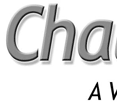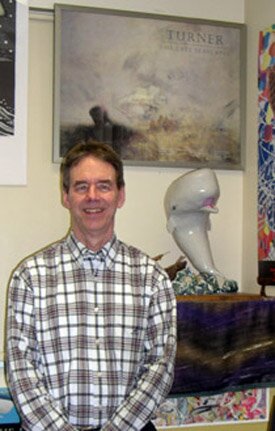| NKY WEATHER NOW |
More NKY Weather |
| Brought to you by: |
|
|
| NKY TRAFFIC NOW |
| Powered by: |
|
|
|
|
||||
 |
 |
|||
| Home | NKY News | Freetime | Travel | Homezone | Cars | Shopping | Working | Classifieds | About NKY | About Us | Contact Us |
|
Archives: Freetime
Melville's Classic Leads Professor on to Whale of a Story
HIGHLAND HEIGHTS When Dr. Robert Wallace has a hunch, it's a good idea to pay attention.
Continuing to explore the threads between art and literature, particularly with his take on the Melville classic, Wallace's study of artist Frank Stella's response to the same novel resulted in another book. With the publication of the Stella book, Wallace caught the attention of both literary and art aficionados such as Roberta Smith of The New York Times, who described his book as "an astounding work," and Philip Leider of Art in America, who said it was "an astonishing full-court press of a book." His integrative approach bringing literature and art together in the classroom has been with received enthusiasm. This encourages students to put more of themselves into their reading of a text. "If you can encourage students to trust their own experience, it becomes more meaningful," Wallace says. Finding Yourself in the Work A case in point was the result of sophomore Abby Schlachter's project in Wallace's Freshman Honor's Literature course on Melville's "Moby Dick." As Schlachter wrote in the publication, "Leviathan, A Journal of Melville Studies," she was "dreading reading the book." After all, how could the pursuit and harpooning of whales possibly speak to a woman? Nevertheless, she stuck with the course as her instructor combined readings of text with visits to the symphony and art museums. Ultimately, the Fine Arts major found a bit of herself in the tattooed and unpretentious character of Queequeg. "His motives were clear and honest," Schlachter wrote. And so, with numerous plaster strips, Vaseline, and a bit of assistance, she created a body cast of herself to become her own artist's rendering of Queequeg in his coffin. Thus, story, art, and woman did indeed come together. "It's only a hunch," Wallace says, "but women are now part of the cultural picture Melville addresses. They are now in the corporate world and women in the professional world have to work in a largely male sector." He goes on to explain that Melville was highly resistant to the "old boys" network, and today women in the workforce deal with the similar issues. "There has been some groundbreaking work in feminist criticism of Melville," Wallace says. As for more hunches? Similarities in the themes of both abolitionist leader Frederick Douglass and Melville caught Wallace's attention. Now, he is onto something. "I was looking at separate traditions," says Wallace. "I did not know that they had read each other's writings and yet they did." But there were deeper connections. Wallace explains that Douglass strongly opposed the Fugitive Slave Act of 1850, which demanded that escaped slaves be returned to the south. When Margaret Garner killed her child rather than having it her returned to a world of slavery, Douglass gave her public praise. One of his first publications was about a judge who held captured slaves until they were retrieved and returned to the south. The judge, Chief Justice Lemuel Shaw, became Herman Melville's father-in-law in a matter of years. As befits him, Wallace credits one of the students in his Melville and Douglass course with finding yet another connection, this time through a thread that connects Douglass and theologian Orville Dewey and a reference made to mulattos in a Melville story. "I probably never would have thought of the Dewey relationship," Wallace says. "I learn from them." By next summer Wallace, his colleagues and his students will likely have traced a myriad of connections between the anti-slave activist and orator and the novelist just in time for the June 2005, Frederick Douglass and Merman Melville: A Sesquicentennial Celebration in New Bedford, Massachusetts. Curiously enough, the conference comes on the 150th anniversary of the publication of both Douglass's "My Bondage and My Freedom," and Melville's "Benito Cereno."
|

|
|
Home | NKY News | Freetime | Travel | Homezone | Cars | Shopping | Working | Classifieds | About NKY | About Us | Contact Us Copyright © 2004, Challenger Communications, LLC, Covington, KY, USA
|

